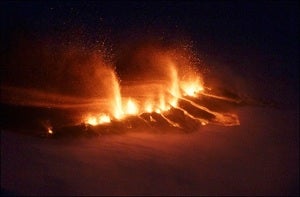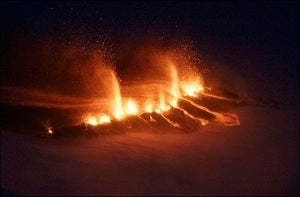 NARRAGANSETT, R.I. — April 19, 2010 — The eruption of the volcano in Iceland has caused a dramatic disruption of air travel that has rippled throughout the globe, but despite the inconveniences it has caused for travelers, URI atmospheric chemist John Merrill says that things could have been considerably worse.
NARRAGANSETT, R.I. — April 19, 2010 — The eruption of the volcano in Iceland has caused a dramatic disruption of air travel that has rippled throughout the globe, but despite the inconveniences it has caused for travelers, URI atmospheric chemist John Merrill says that things could have been considerably worse.
Merrill said that when a volcano erupts, the height that the ash travels depends on the intensity of the eruption. The location of the Iceland volcano beneath the Eyjafjallajokull glacier has ensured that the plume has not reached especially high, in contrast to the eruptions of Mt. St. Helens or Mt. Pinatubo. Because wind direction and wind speed vary with height in the atmosphere, the higher the plume the more widespread the ash travels.
Even more important, larger eruptions that inject ash to even greater heights can have an impact on global climate.
“One component of a volcanic plume is sulphur dioxide, which, when injected into the stratosphere, can have a long lifetime,” said Merrill. “It gets oxidized into sulphate, the same particles as acid rain, and those particles scatter sunlight, which can act as a parasol and reduce the amount of sunlight reaching the surface. It would be as if the sun were shining a little bit less for as long as those particles are up there. And in big eruptions it can last more than a year.”
Because the eruption in Iceland is relatively small and the ash column hasn’t reached very high, Merrill says it is unlikely that the sulphate will reach stratospheric levels. He cautions, however, that a nearby volcano has the potential for a larger eruption that could lead to temporary global cooling.
“When Mt. Pinatubo erupted in 1991, it stopped the gradual increase in global temperatures and counteracted global warming for about a year,” Merrill said.

